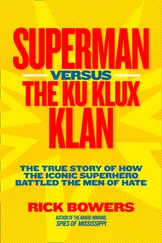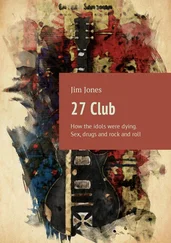Scanlan’s family had some influence and money, and he was represented by Daniel O’Connell, who would one day be ‘the Liberator’ of the Irish, but who was in 1819 one of the county’s most successful barristers. There are barely any newspaper reports of the trial itself, and later the Pall Mall Gazette claimed that family influence had hushed up the scandal. The Belfast News-Letter in its report omitted Scanlan’s name altogether, and most of the papers covered the case only when Sullivan was caught and tried, in July 1820. It is therefore difficult to put together an account of the trial, but even with a barrister of O’Connell’s abilities, there was not much defence to be made. The circumstantial evidence was unanswerable: the two men were the last people to be seen with Ellen Hanley, Scanlan was identified as the purchaser of the rope that was found tied to the body, Sullivan’s sister still had some of her clothes, and his landlady had others, received from Sullivan in lieu of rent. A local minister said that within a few days of the elopement, Scanlan was already obviously bored with his young ‘wife’. Scanlan blamed the missing Sullivan, saying he himself had had nothing to do with Ellen Hanley’s disappearance and death, that Sullivan had taken her out in a boat and returned without her. But he wasn’t believed. He was quickly found guilty, and even his own lawyer was untroubled by the verdict: ‘It is very unusual with me to be so satisfied,’ O’Connell wrote his wife, ‘but he is a horrid villain.’
Some months later, Sullivan was picked up for passing forged banknotes. In prison he was recognized as Scanlan’s servant, and he was brought to Limerick for trial. Unlike Scanlan, he had no legal representation. When he was asked if he had counsel, he replied: ‘I have no money to fee counsel or attorney, my Lord, and have nobody to look to but you and the great God to give fair play for my life.’ The prosecution simply proceeded, calling its first witness, not an unusual situation for a working-class defendant. Sullivan’s ‘defence’ consisted of him asking one witness two questions of no seeming relevance at all, and after fifteen minutes he was found guilty. Before his execution he confessed, saying that Scanlan had wanted to get rid of Miss Hanley because ‘she always called him her husband’, and he had asked Sullivan to take care of it. Sullivan claimed that it was ‘some days’ before he agreed – as though that made it better – and then he ‘bought a boat for the express purpose of destroying her, and got an iron chain and ring made by a smith in Kilrush, to tie around her neck. Scanlan settled the rope, and spliced a loop to it, which he put round a large stone, in order that I should lose no time, and left everything ready for me.’ On the water, Sullivan hit Ellen with his musket, missing her head and breaking her arm, ‘then beat her with the gun till she was quite dead. tied her right leg to her neck, to which a large stone was attached’, and threw her overboard.
So, no pretty, scenically-painted death in a red cape. Just two brutal men who used and threw away a child because they thought she didn’t matter. Romanticization quickly set in, however. First was M.J. Whitty in 1824. His Tales of Irish Life included a story based fairly accurately on Ellen Hanley’s life. Sally is the daughter of a humble but hardworking peasant. She is, of course, wonderfully beautiful, intelligent and ‘docile’. She works hard, gives her father her earnings, and his ‘approving kiss was the best reward of duty’. One day a stranger stops to ask for a drink of water, and tips her; she takes her first step on the downward slope by not handing the cash over to her father, but spending it on fashionable fripperies. She runs off with the stranger, and he marries her, choosing a ‘rejected’ priest whom he thinks will accidentally-on-purpose forget to register the marriage; but unfortunately he has not chosen well, and the marriage is valid. Within weeks he tires of her, takes her boating with his servant, and that is the end of her. Sally’s father and abandoned fiancé are on his trail, however, and see the murder take place, although they are too far away to prevent it. The husband is arrested and found to be ‘allied to some families of the highest respectability in Ireland, whose interest with the executive was so powerful, that the judge who tried him, acting in a manner which would have immortalized a Roman, ordered his immediate execution lest a reprieve might be obtained’. (Summary execution as a civic good?)
Gerald Griffin, a struggling journalist, may have read this story, but it was Griffin’s novel The Collegians that marked the real beginning of the legend. Now Ellen Hanley becomes Eily O’Connor, while Myles Murphy, a farmer who sells Kerry ponies, is nicknamed Myles-na-Coppaleen, Miles of the Ponies. Here is Hardress Cregan, who has run through his inheritance and is sponging off his friends; Danny Mann appears too, although here he has a sister, ‘Fighting Poll of the Reeks’, ‘a fearless, whisky-drinking virago, over six feet in her stocking vamps’, whom Boucicault wisely decided would be too much for delicate West End sensibilities. Anne Chute and Kyrle Daly appear for the first time, and Daly is equipped with a comic servant named Lowry Looby. Mrs Cregan pushes her son to marry Anne: ‘If you wed as I desire, you shall have all the happiness that rank, and wealth, and honour, and domestic affection, can secure you. If against my wish. whether I live or die. you shall never possess a guinea of your inheritance.’ Hardress omits to tell his mother that he is already married. But as weeks go past (not the mere days that it took the real Scanlan), he tires of Eily, and Danny has a number of suggestions: sending her back to her father, shipping her off to Quebec, or killing her. Hardress spurns them all, then gives a series of contradictory orders, until it appears he barely knows what he wants. Danny however understands, and takes Eily out on the water, returning alone. Hardress confesses to his mother, and when the body is found, and Danny flees, she plans to buy her son’s way out of trouble. Danny refuses to betray his master until, thinking Hardress has double-crossed him, he confesses all. Hardress is arrested, but is not considered entirely culpable – did he or did he not tell Danny to kill her? He is transported, Danny is hanged, and Mrs Cregan lives on to do ‘austere and humiliating works of piety, which her church prescribes for the observance of the penitent’.
The novel was hugely successful – Griffin was said to have made £800 from it – perhaps because he set the story in the eighteenth century, a distancing effect that made the details appear less brutal. He also prettied things up: Eily doesn’t steal from her guardian, and she definitely marries. She and her family are classed-up, too: her uncle is no longer a rope-maker, but the parish priest, ‘educated at the university of Salamanca’; she speaks in standard English, not dialect, and is as ‘superior in knowledge as she was in beauty’ – no double teeth for Eily – as well as being a regular churchgoer.
With these adjustments, the theatre took Eily to its heart. By 1832 two Eily O’Connor plays had appeared in London: one by J.T. Haines at the City of London Theatre in Bishopsgate, Eily O’Connor, or, The Foster Brother; another by Thomas Egerton Wilks, Eily O’Connor, or, The Banks of Killarney! at the Coburg, complete with the characters as they appeared in Griffin. (Wilks in places barely troubled to alter Griffin’s punctuation, much less his words.) Despite – or because of – its similarity to The Collegians (and despite lines like, ‘Yonder comes Mr. Hector Creagh, the polished duellist’), this play was the one to survive until Boucicault came and blew everyone else off stage (Queen Victoria loved it so much she went three times in a fortnight).
Читать дальше












